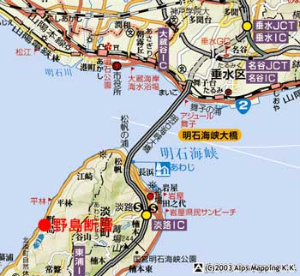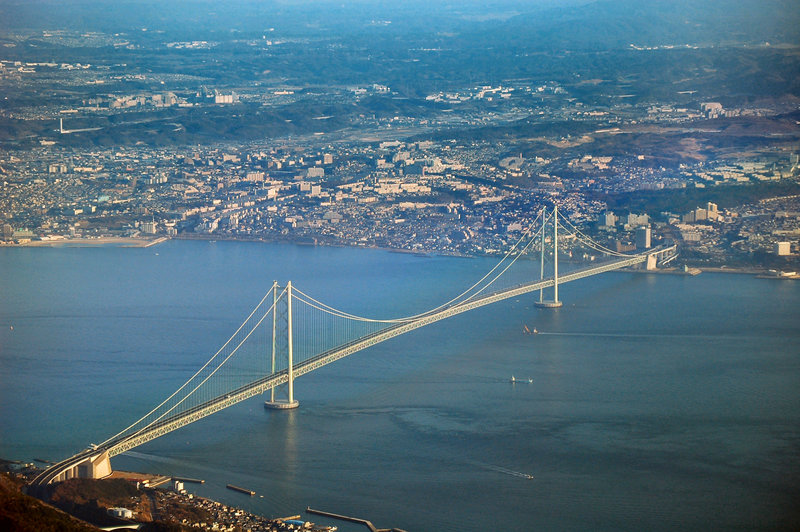
Akashi Kaikyo 현수교는 세계의 가장 긴 현수교이고 그것은 아마도 일본의 최고의 공학적 공적일 것이다.
It took two million workers ten years to construct the bridge, 181 000 tonnes of steel and 1.4million cubic metres of concrete. The steel cable used would circle the world seven times
181,000 ton의 강철과 1,400,000㎥의 콘크리트가 들어갔고 200만 명의 근로자가 참여하여 10년 걸려서 건설되었다. 사용된 강철 케이블은 세계를 7번 돌 수 있는 길이이다.
It has six lanes and links the island of Awaji and the mainland city of Kobe, a distance of four miles. The concept of building a bridge across the Akashi Straits became urgent after a disaster in 1955. A ferry carrying over one hundred children sank after colliding with another ferry, in the busy shipping lane. One hundred and sixty eight children and adults died in the disaster. Political pressure for a bridge increased and in 1988 construction began.
6차선으로 Awaji의 섬과 Kobe본토 도시를 연결하며 거리는 6마일이다. Akashi Straits을 가로질러 다리를 놓는 생각은 1955의 재해 후에 긴급히 제기되었다. 100명이상의 어린이를 태운 나룻배가 또 다른 선적배와 번잡한 항로에서 충돌한 후 가라앉았다. 이 재해로 168명의 아이들과 성인이 죽었다. 다리 건설에 대한 정치적 압력이 증대되었고 1988년 다리 건설이 시작되었다.
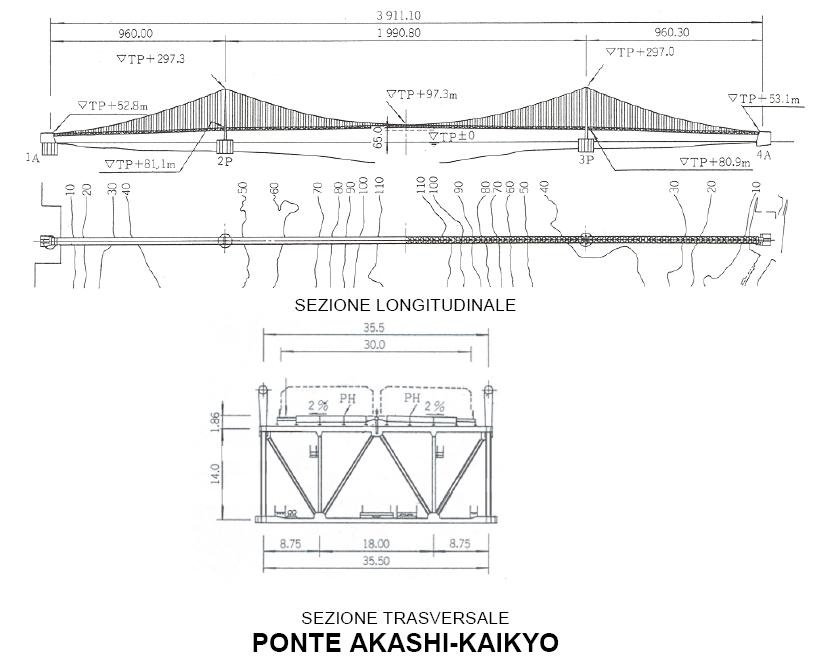
The Akashi Straits is four miles wide at the bridge site with sea depths of one hundred metres and currents averaging fourteen kmph. The Akashi Straits is one of the busiest sea lanes in the world with over a thousand ships per day travelling through it. Furthermore, the bridge is in a typhoon region in which winds can reach speeds of 290 kmph.
Akashi 해협은 교량이 있는 곳의 깊이가 100m이고 평균 유속이 14 kmph이며 폭이 4mile이다. Akashi 해협은 그것을 통해 여행하는 배가 하루 1000척 이상되는 세계의 가장 바쁜 항로 중의 하나이다. 더욱이 이곳은 290 kmph에 달하는 풍속의 태풍지역에 있다.

The construction of a suspension bridge involves the use of two main cables stretching between two towers. The roadway beneath these is suspended by more cables. To stop the towers, roadway and cables collapsing, they are held at either end by large anchor blocks (the Akashi anchor blocks weigh 350 000 tonnes).
현수교의 건설은 2개의 타워 사이에 있는 주 케이블 2개를 사용하며, 이것들 밑의 도로는 더 많은 케이블로 지탱한다. 타워(도로와 케이블)가 쓰러지는 것을 막기 위해 양쪽 끝에서 큰 앵커 블록이 (앵컹블록의 무게는 350,000ton) 주케이블을 붙잡는다.
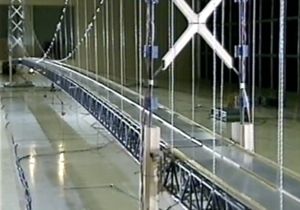
일본 디자이너와 엔지니어는 복합적인 모델을 세움으로써 교량에 대한 디자인을 테스트했다. 다리가 악천후와 태풍으로 부터 견딜 수 있는 디자인이 되도록 바람 터널에서 테스트를 했다. 옆의 사진은 다양한 과학적인 실험을 위한 40m 모델이다. 엄격한 테스팅을 한 후, 교량의 건설은 시작될 수 있었다.
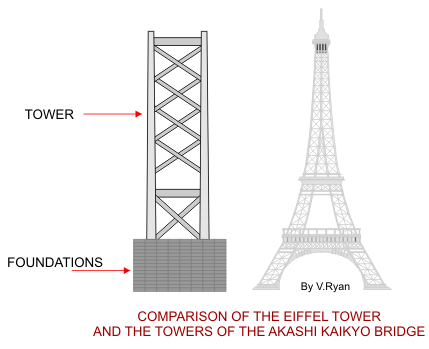
In 1989 work on the two towers began. Each is nearly as high as the Eiffel Tower and is designed to have a two hundred year lifespan. The towers are 283 metres in height and if the foundations are included, this adds a further 60 metres. Each tower is made up of 90 sections and they were built with absolute precision as the design allowed only a 25mm offset at the top.
1989년 타워에 대한 작업은 시작되었다. 타워는 거의 에펠탑 만큼 높고 수명 200년 기준으로 만들어졌다. 타워는 높이가 283 미터이고, 만약 기초가 포함된다면 6m를 더한다. 각 타워는 90섹션으로 구성되었고 타워 끝에서 25mm 상쇄만을 허락할 정도의 절대적인 정확성을 가지고 만들어졌다.

애니메이션출처 : http://www.technologystudent.com/culture1/akashi4.htm
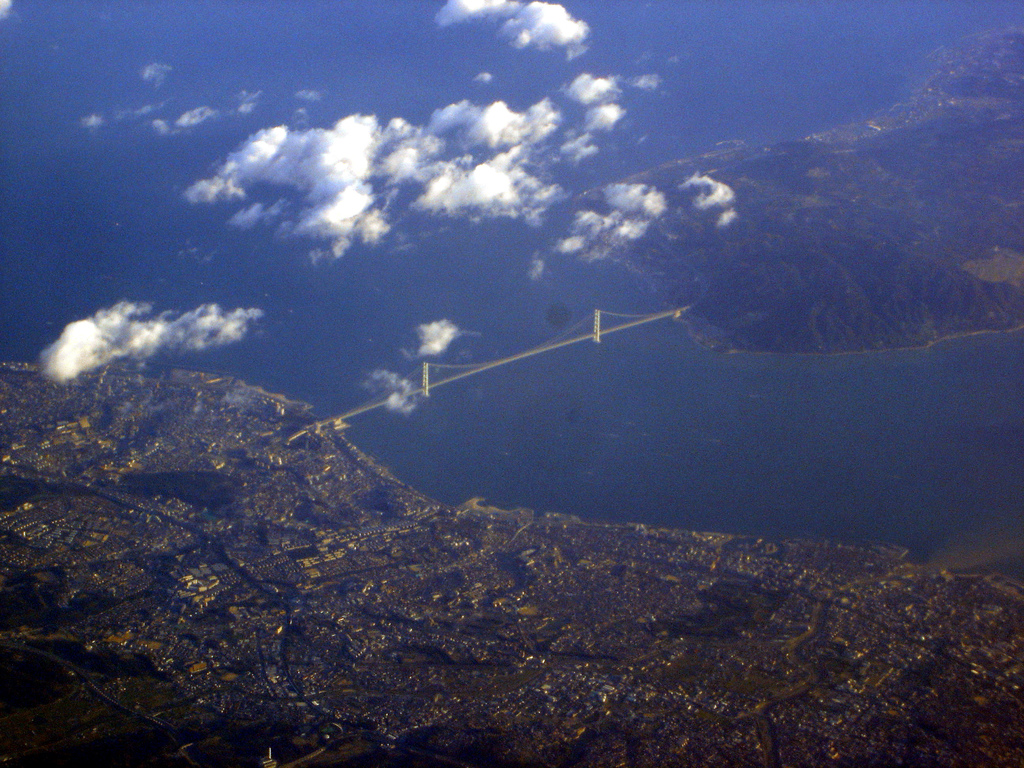
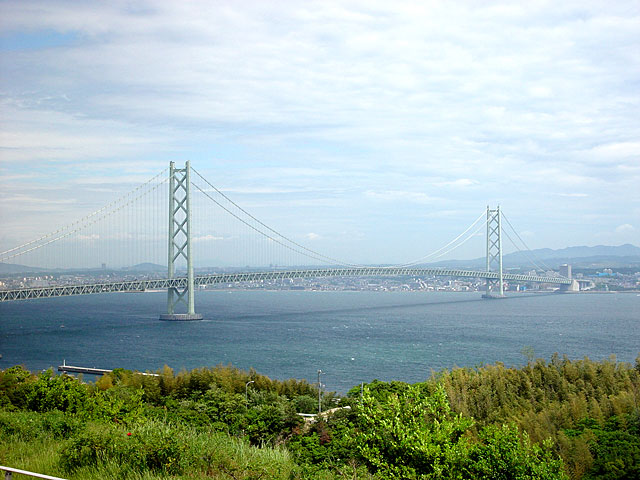
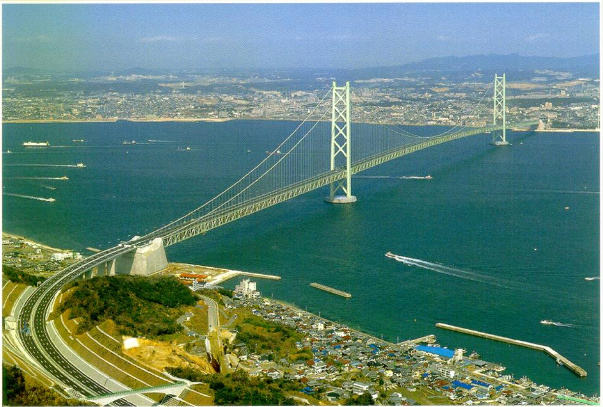
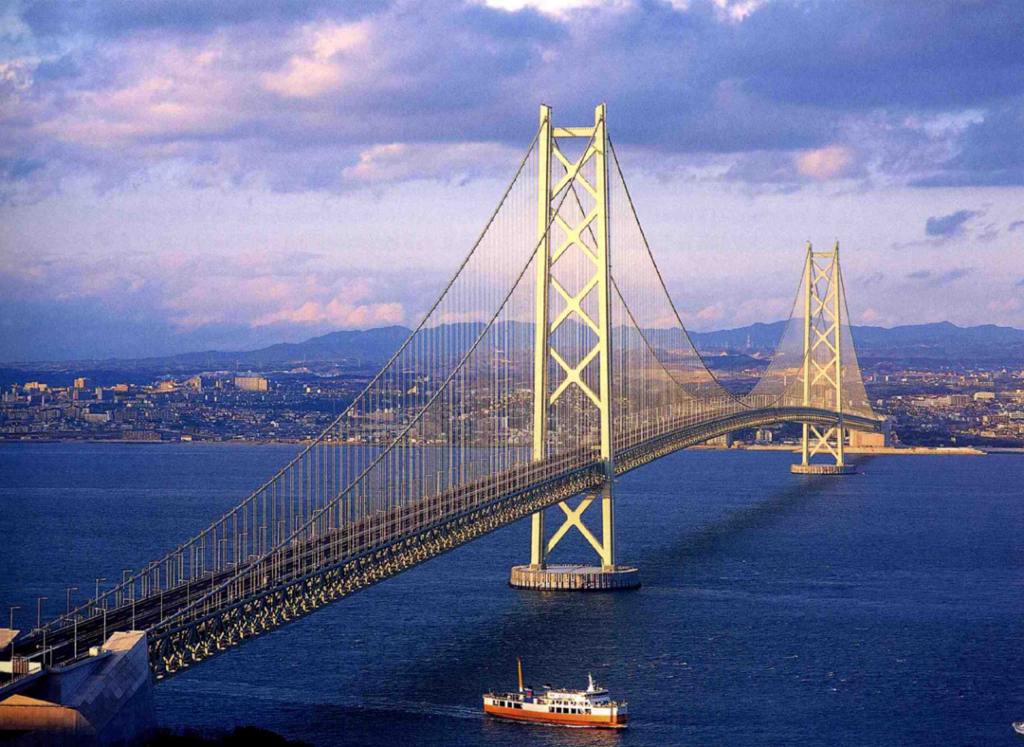
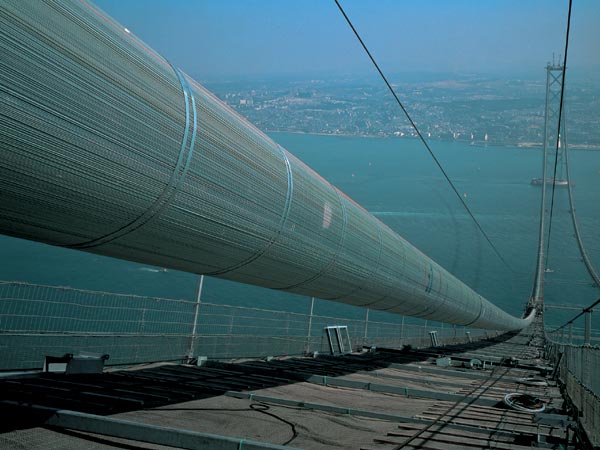
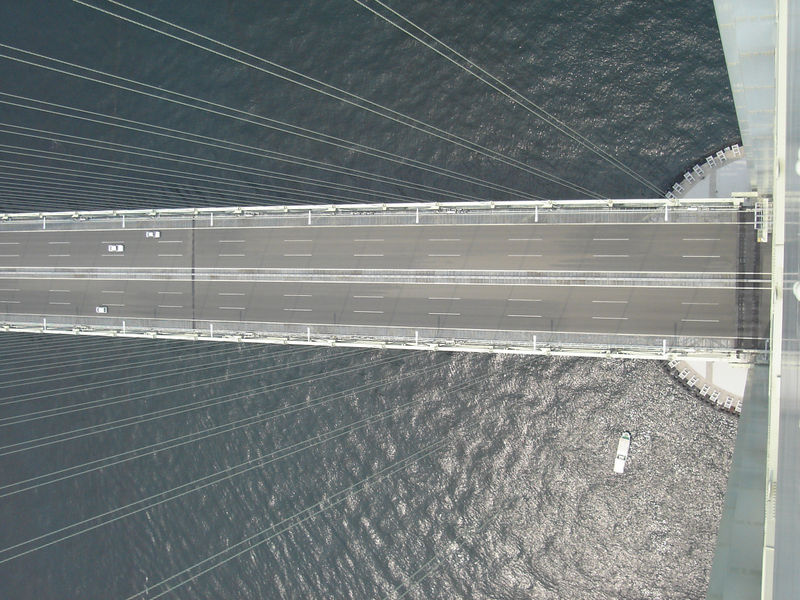
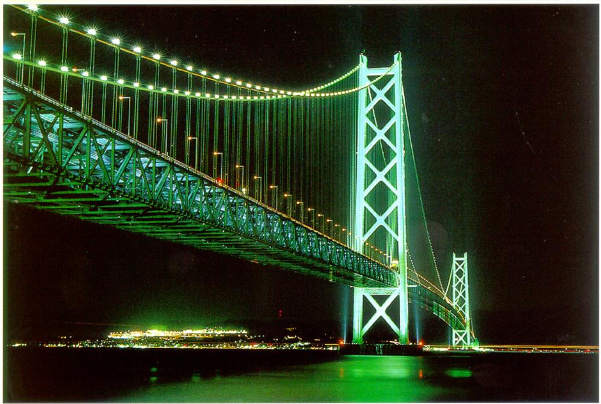
참고사이트 : 구글어스(Google Earth)
http://en.wikipedia.org
http://www.technologystudent.com/index.htm
http://user.chollian.net/~ndo99/bridge/br18_akashi.htm
'세계의 구조물' 카테고리의 다른 글
| 인천대교 홍보동영상 (전문가용) (0) | 2008.05.31 |
|---|---|
| 피낭대교(Penang Bridge) (0) | 2008.05.19 |
| 프랑스에 위치한 Courchevel 공항 (Savoy 스키리조트) (0) | 2008.05.10 |
| 컨페더레이션 브리지 (Confederation Bridge, 캐나다) (0) | 2008.05.07 |
| 오레순트橋 (Oresund Bridge, Sweden / Denmark) (0) | 2008.05.04 |
